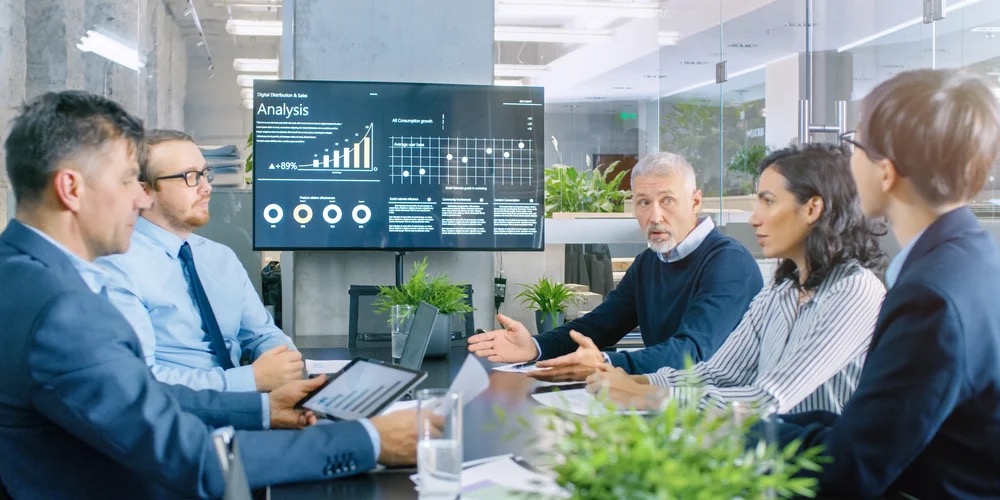
With hindsight, it’s easy to look back and see how our workplaces and cultures could have been better prepared for a year like 2020. Our digital infrastructures weren’t as strong and dynamic as we hoped, our work cultures and skills weren’t as ready for new ways of working as we needed, and our digital applications were simply designed for a different era and different needs. But hindsight only provides perspective on what could have been better. It doesn’t necessarily create a map for the future to anticipate twists and turns, especially in today’s disruptive times.
The reality today is that organizations still must take stock and prepare for a new future of work. One where large-scale change — created by an exponential continuum of global tech innovation along with recent systemically disruptive events — is a regular fixture. Research has shown that deeply interconnected systems, which our human world of pervasive transportation systems and digital networks has now become, are highly effective at rapidly propagating and amplifying disruptive events. Yet undeniably, there is also great value in our global supply chains and widely available digital knowledge, among the many attendant benefits of technology. In the end, it’s a double-edged sword. As with all technology, there are both benefits and opportunity costs.
However, the fragile state-of-affairs for our workplace is not one of those costs. Today’s challenging remote work situation is mostly the result of rapid unexpected and extraordinary change. Dysfunction of work has not been endemic and organizations can certainly commit to creating a more robust, resilient, and adaptable workplace if they choose. In fact, better adaptation is likely not going to be a choice, if the pace of major impactful events this year with the global pandemic is any indication.
Our businesses and workers now need the very best we can offer them, to nurture them through the difficult work situation of today. It will also position them for a brighter future, with all the effects which that foreknowledge will have on their mental and even physical state. Building and maintaining a powerful new digital employee experience that fosters seamless collaboration, improved creativity, higher productivity, and better engagement is crucial to not just surviving but driving revitalization and growth.
In this way, not only can organizations help workers more fully meet their true potential, but organizations must now access to that potential more than ever before. In an uncertain economic environment, successful revitalization and innovation is the only sure way out. With today’s latest work technologies, the dreams of HR departments and employees themselves can now be realized. Namely, tapping the full power of our organization’s human capabilities.
But doing this successfully depends on applying the right employee experience technology to the full spectrum of business and personal needs. This ranges from creating seamless access to digital touchpoints and safe, seamless security protections to empowering tools to manage all aspects of work and life while steadily enriching and enabling their daily experience in a more personalized way so that they reach their full potential.

Rethinking Employee Experience: Challenging but Highly Rewarding
However, for many organizations it won’t be as easy as they wish to transform work in this now necessary way. That’s because digital employee experience currently consists of hundreds to thousands of different digital applications within most organizations. Upgrading and improving them has long been a daunting task. So to is the improvement of the technical foundation to support rapidly shifting security threats, improved ease-of-access, higher usability, better trainability, governance, and compliance, and so on.
Complexity is the enemy here, especially for employee experience. Yet it can also aid the process. New mindsets have emerged that now allow us to manage complexity better. Recent success stories have unleashed new insights that point to fresh breakthroughs, as well as new lessons learned on how to remove obstacles to the transformation of work.

Until recently, however, many senior leaders did not even regard employee experience as a significant digital concern. Now, with the widespread shift to remote work, it has suddenly become mostly digital. In this way, culture plays an undeniable part in employee experience, perhaps even more with digital remote work. What’s more, culture is key to engagement. And successful employee engagement takes more than a digital-friendly employee experience. It requires a robust corporate culture that uses it for its strengths such as visibly cultivating shared values, being transparent, and fostering open collaboration, among other traits.
The COVID-19 pandemic has forced us to adjust to new ways of working. Organizations can incorporate a roadmap for employee experience into their operating model to remove complexity from hybrid and distributed work environments, helping employees to do their best work.
One key insight from studying years of digital adoption reveals how technology enables culture as much as any other factor, by guiding people through new processes and behaviors in fresh directions that eventually become internalized. Culture can be included in the digital employee experience.
Including culture in these changes offers hope because the traditional anchors of employee experience have long been the worker’s physical environment, their technology environment, and the organization’s culture. With remote work, the physical environment has become greatly diminished and the digital has become preeminent. But work culture, long more connected to the physical, has not yet caught up to the digital primacy of work today and for the likely future. Yet digital offers a new on-ramp for it.
A More Modern, Humanized Digital Work Is Arriving
All the effort that has gone into businesses and technology has only ever been about one thing: people. Whether it’s creating value for customers, partners or suppliers, or workers, work is a human activity with human ends. But in the early days of technology at work, which has been the last 40 years of information technology evolution, this human-centric focus has sometimes been lost.
The pandemic has brought the human dimension back in spades, reminding us unavoidably of what is most important: human health, well-being, and prosperity. These are the core fountain of all downstream business benefits, from shared value creation to innovation. This is leading us back to a improved hierarchy of worker needs (see the figure above) when it comes to what is required from a digital workplace today in order to properly support the full requirements of the post-pandemic worker journey.







